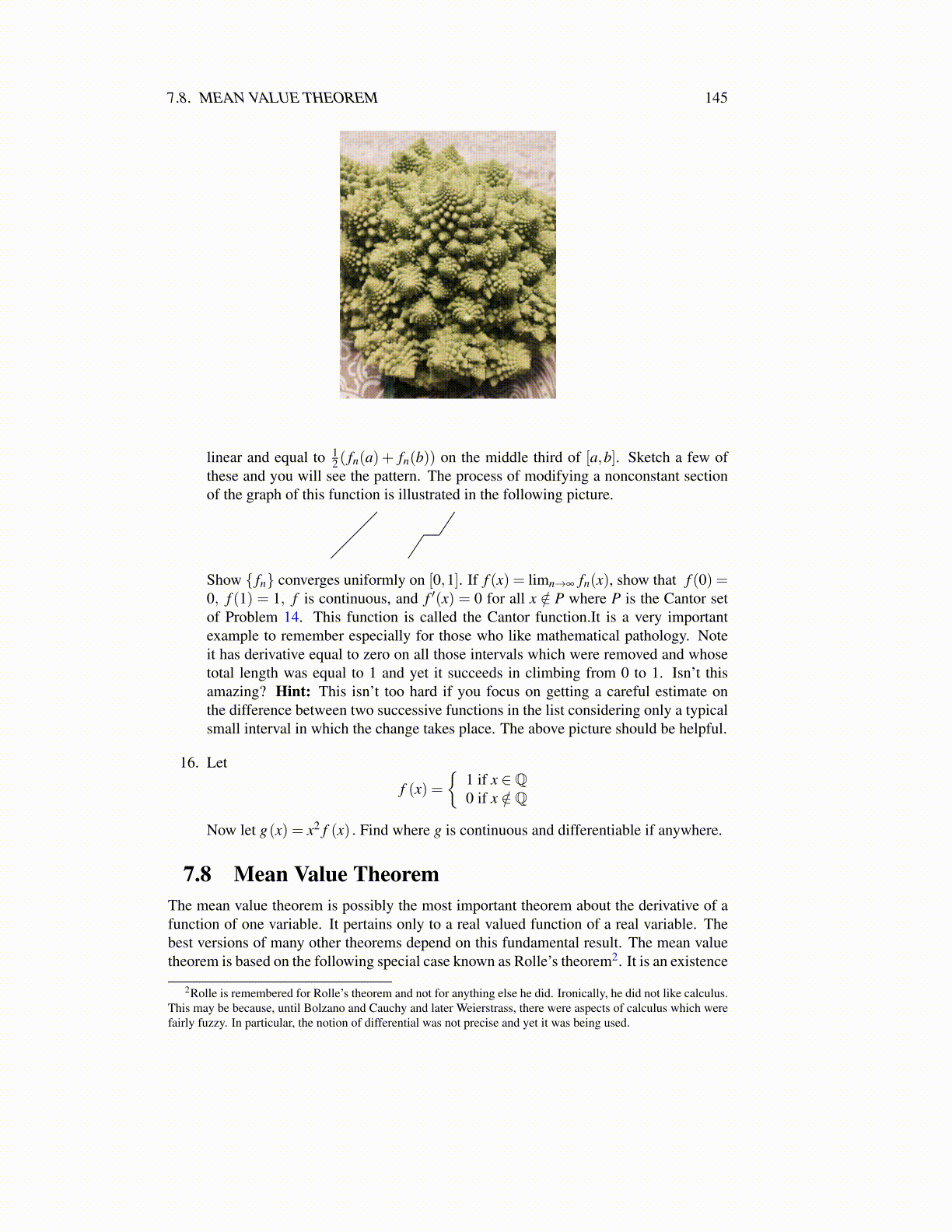
7.9. EXERCISES 145
Then taking the real part of both sides,
Re f (x+h)−Re f (x) = Reo(h) = o(h)
and so Re f ′ (x) = 0 and by the first part, Re f must be a constant. The same reasoningapplies to Im f and this proves the corollary.
Corollary 7.8.5 Suppose f : C→ C and f ′ (x) = 0 for all x. Then f is a constant.
Proof: Let t ∈ R and consider h(t) = f (x+ t (y− x))− f (x) . Then by the chain rule,
h′ (t) = f ′ (x+ t (y− x))(y− x) = 0
and so by Corollary 7.8.4, h is a constant. In particular,
h(1) = f (y)− f (x) = h(0) = 0
which shows f is constant since x,y are arbitrary.
Corollary 7.8.6 Suppose f has real values and f ′ (x) > 0 for all x ∈ (a,b) where a ≥−∞ and b≤∞. Then f is strictly increasing on (a,b) . That is, if x < y, then f (x)< f (y) . Iff ′ (x)≥ 0, then f is increasing in the sense that whenever x < y it follows that f (x)≤ f (y) .
Proof: Let x < y. Then by the mean value theorem, there exists z ∈ (x,y) such that
0 < f ′ (z) =f (y)− f (x)
y− x.
Since y > x, it follows f (y) > f (x) as claimed. Replacing < by ≤ in the above equationand repeating the argument gives the second claim.
Corollary 7.8.7 Suppose f ′ (x)< 0 for all x ∈ (a,b) where a≥−∞ and b≤ ∞. Then fis strictly decreasing on (a,b) . That is, if x < y, then f (x) > f (y) . If f ′ (x) ≤ 0, then f isdecreasing in the sense that for x < y, it follows that f (x)≥ f (y)
Proof: Let x < y. Then by the mean value theorem, there exists z ∈ (x,y) such that
0 > f ′ (z) =f (y)− f (x)
y− x.
Since y > x, it follows f (y)< f (x) as claimed. The second claim is similar except insteadof a strict inequality in the above formula, you put ≥ .
7.9 Exercises1. Sally drives her Saturn over the 110 mile toll road in exactly 1.3 hours. The speed
limit on this toll road is 70 miles per hour and the fine for speeding is 10 dollars permile per hour over the speed limit. How much should Sally pay?
2. Two cars are careening down a freeway in Utah weaving in and out of traffic. Car Apasses car B and then car B passes car A as the driver makes obscene gestures. Thisinfuriates the driver of car A who passes car B while firing his handgun at the driverof car B. Show there are at least two times when both cars have the same speed.Then show there exists at least one time when they have the same acceleration. Theacceleration is the derivative of the velocity.